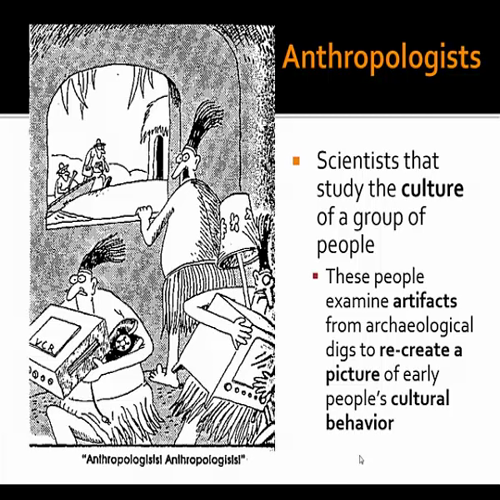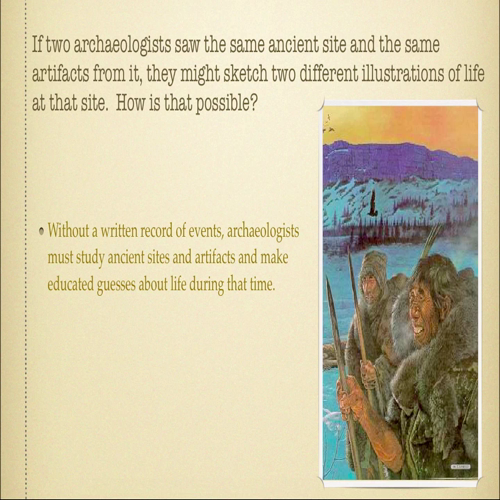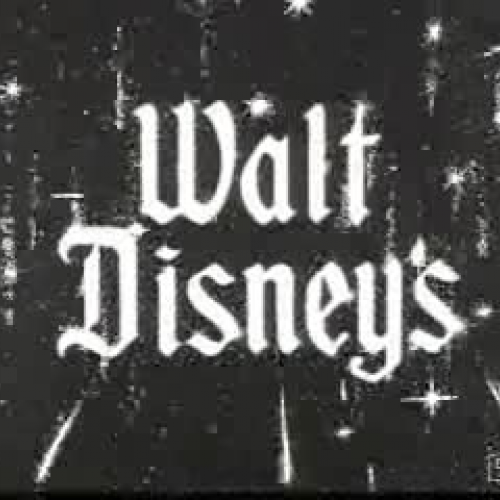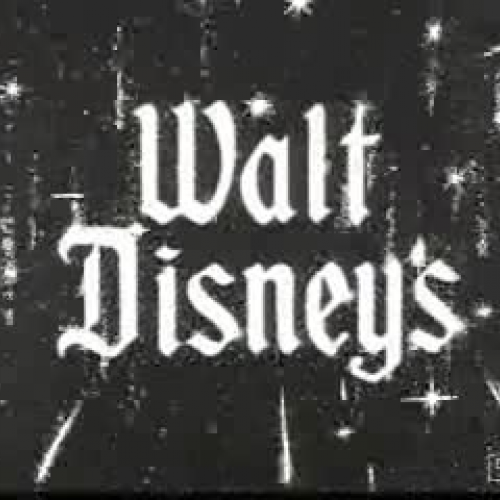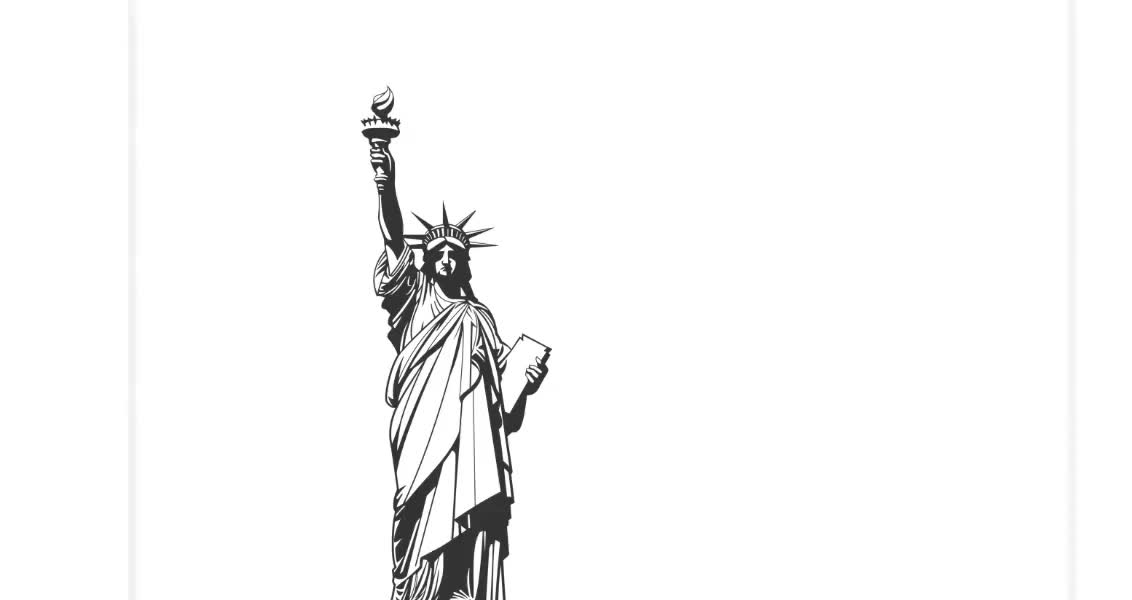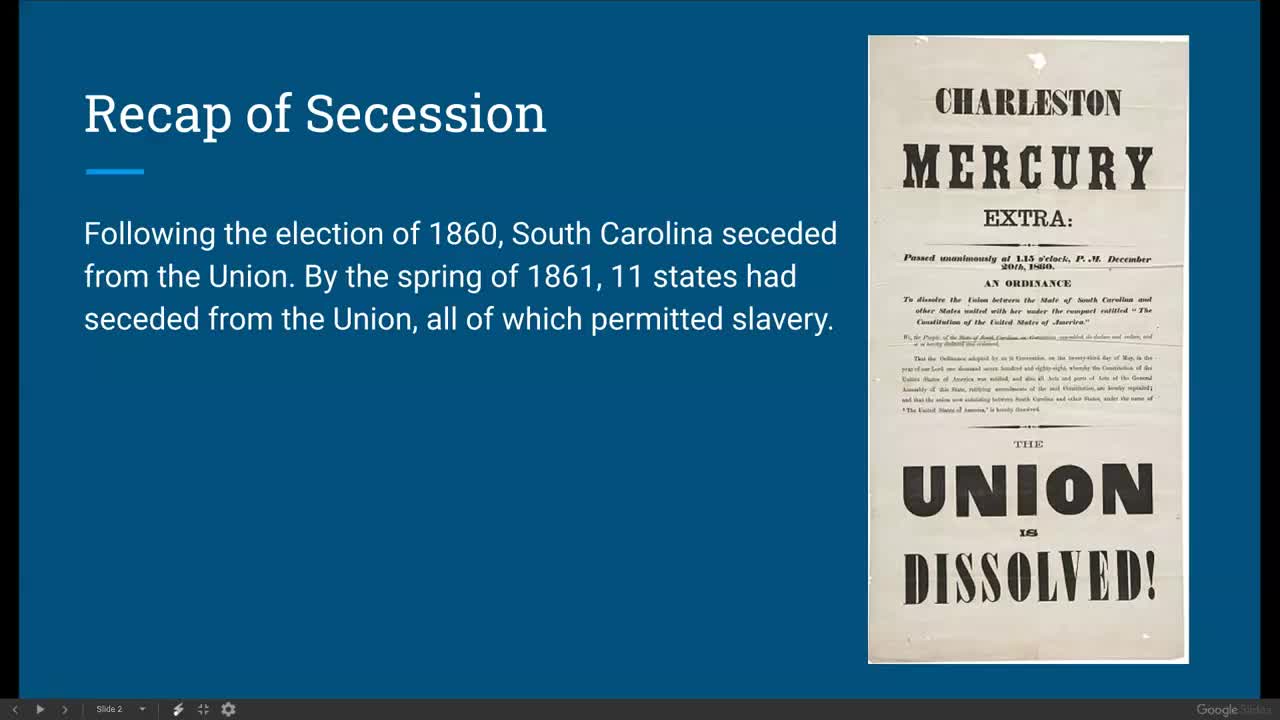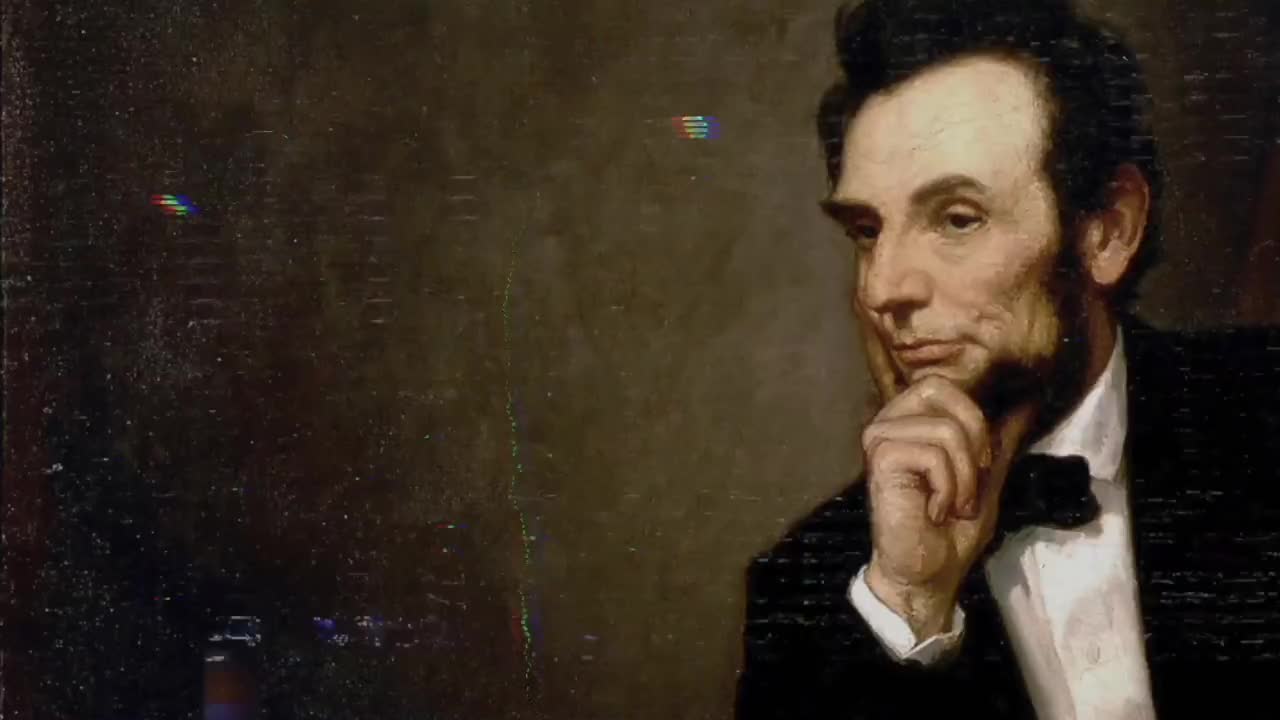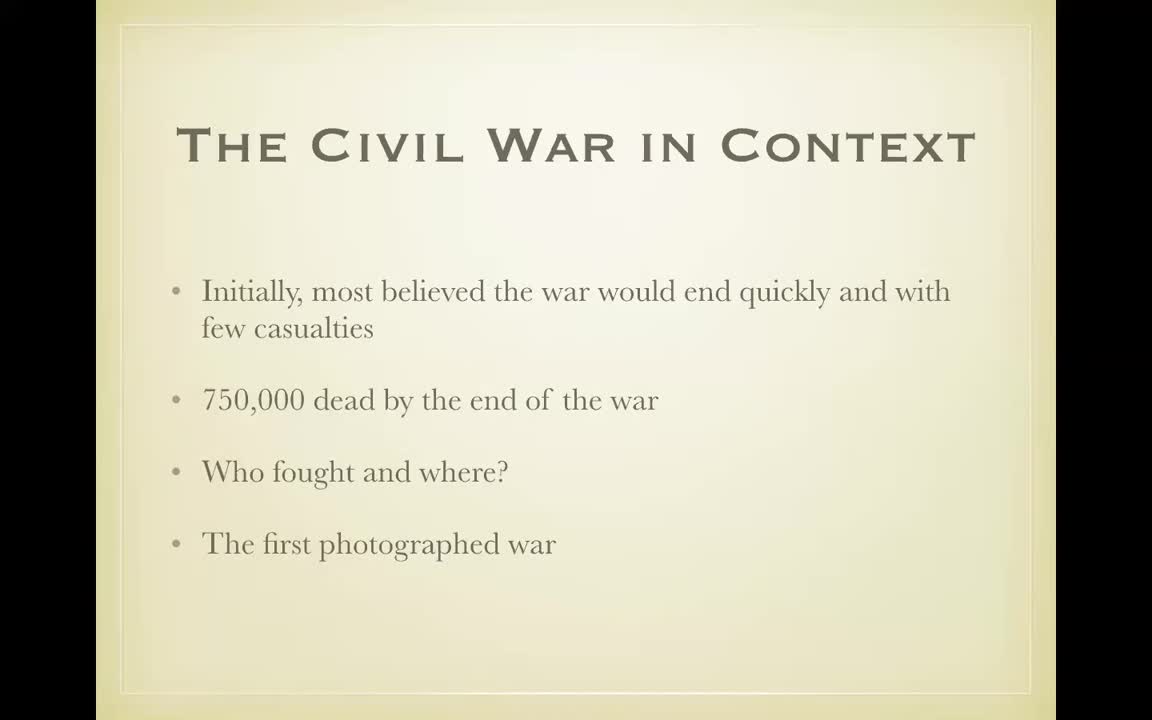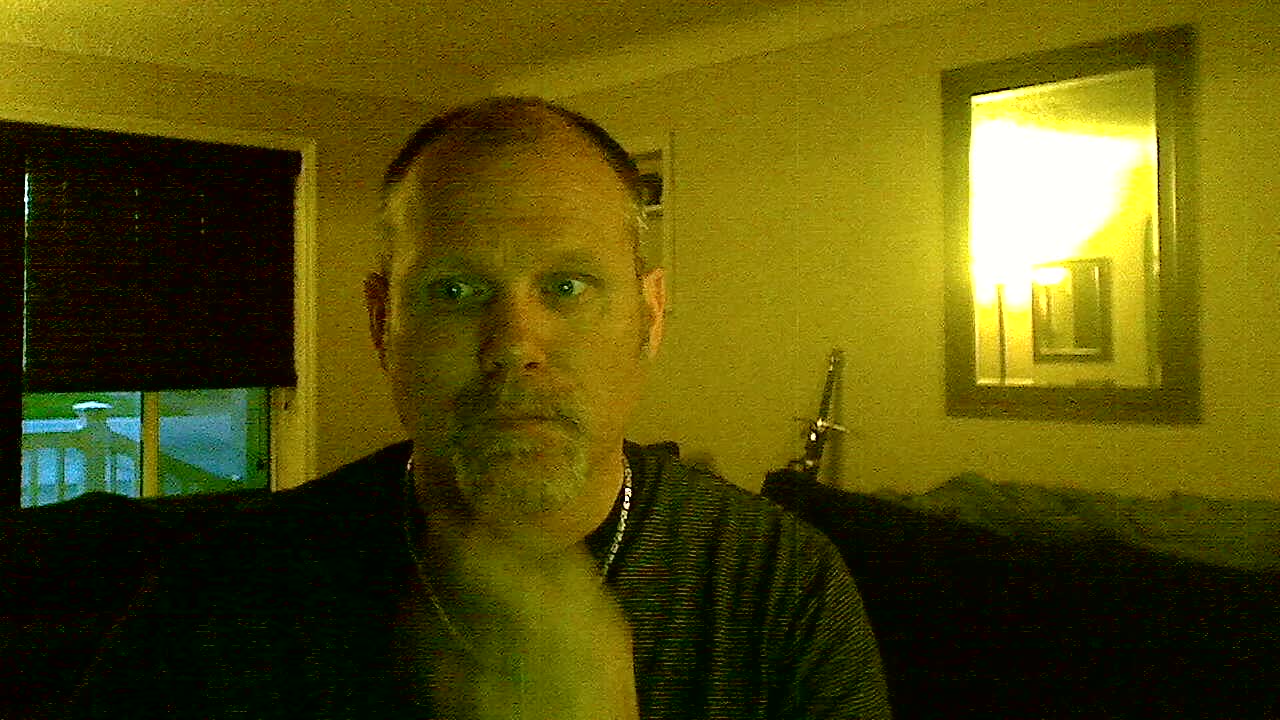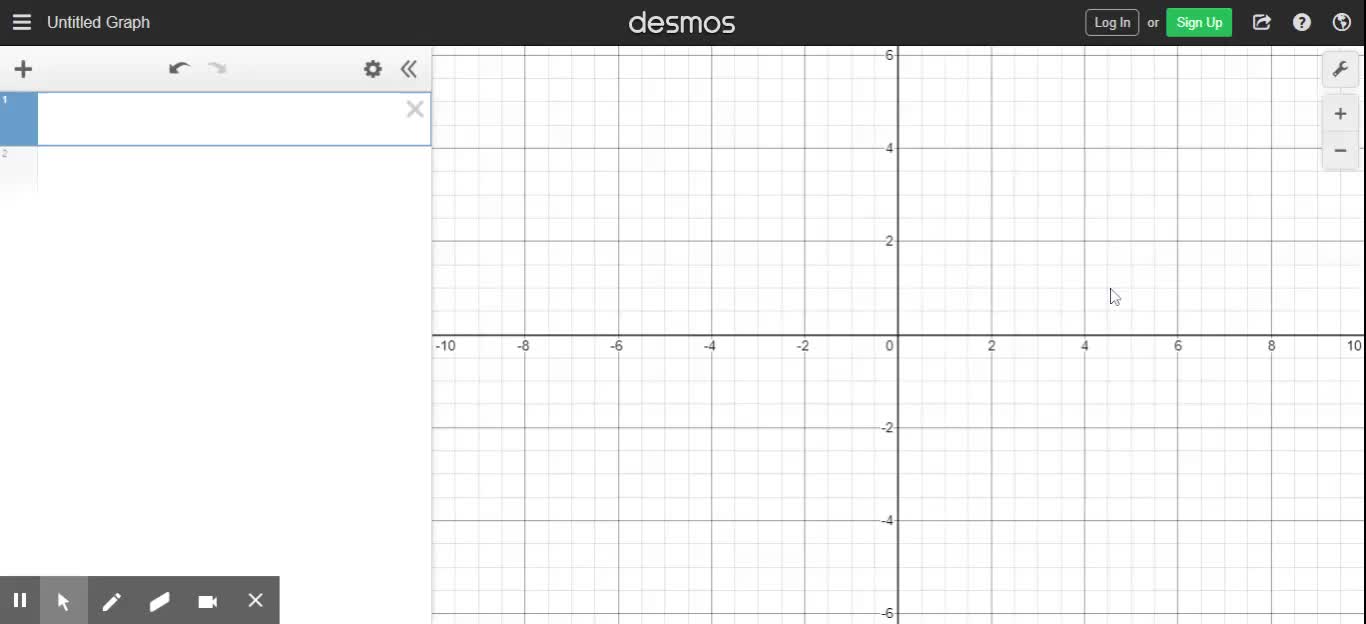Mr. Young's History-: #1 Prehistory
High School / History / Pre History
Hey guys, mister young here with your first flipped video of the school year and today we're going to be talking about the prehistoric world. So as you know, the flipped classroom is a new thing we're doing here in global 9. So something that you should have out in front of you right now is your note sheet. And maybe you have a hard copy of it. Otherwise you could have it downloaded from my web page, which will allow you to type right into it. If you're using your laptop or your tablet, whatever device that you're using. So when you see the word prehistoric or prehistory, I'm sure you have some images that come into your mind. For a lot of people, you may think of like dinosaurs or cavemen, kind of like the picture of the guy here. For our purposes, we're going to be talking about prehistory in terms of a time period before writing was established. And we're going to look at human beings in human being like creatures that lived in these time periods before history was recorded. So what you may not know is that people go back millions and millions of years ago. And so for us to understand how they lived, we have to use different methods because we don't have written records of what really happened. So think about if you come into my classroom, you look all around and you see history textbooks. And history textbooks are full of information, whether it be dates, battles that were fought, civilizations, accomplishments, languages, whatever it may be. The reason we have all that is because somebody took the time to write that down. And importantly, that written language was developed. So when these early humans were living, they didn't have written language that we think of and take for granted today. So if we want to figure out how do they live and what do they do, how are we supposed to know this? Well, historians who put these pieces together rely a lot on scientists. And there's three types of scientists that really help in this process. We have archeologists, paleontologists, and anthropologists. And then determining the age of things we use this process called radiocarbon dating. So we're going to take a look at a little of what each of these scientists do. So the first type of scientist we got are archeologists. So if you've ever seen the Indiana Jones movies, Indiana Jones here, he was an archeologist. Now, Indiana Jones is doing some digging up of some a lot more interesting artifacts. He's looking for jewels or these idols or emblems. Archeology generally though is just kind of boring, okay? You're looking at digging up artifacts or things that are made by humans and left behind by humans. So whether it be pottery, tools, clothing, anything that can tell us a little bit about the way that people lived. So you may think, okay, you got a piece of cloth. What does that mean? What does that tell us? Or you got a piece of pottery, what's so important about that? A lot of times when archeologists find pieces of pottery, for example, they'll have pictures of gods or goddesses or maybe people farming or doing some type of ritual. So it can give an insight into the culture that the people had. And the way that they lived. So imagine that your bedroom was abandoned today. And for thousands of years, it was abandoned. And then after all this all this time, scientists came in and they started digging around and looking at that stuff and looking at what CDs you had or maybe what DVD collections or what type of clothes that you wore or if you had a TV or a game system or a guitar, whatever you had. They could start to put together a picture of what you were like and what types of things that you did and try to come up with who you were as a person. So that's kind of what archeologists will do. Next we've got paleontologists and these are the people that deal directly with fossils. And they're the ones that tend to dig up fossils as you can see these two scientists doing right here. Obviously they have a dinosaur. Paleontologists don't only dig up dinosaurs. They dig up animals, human beings, fossils. So fossils are anything. It could be a full skeleton, like the dinosaur here. It could be a piece of a bone, a full bone, a skull, something that's an actual remain of a living creature. So what can this tell us about people? All right, so scientists can look at the bones, what kind of condition they're in. How frail they may be, maybe they're really strong. So this could give an insight to what types of food they eat because their diet will a lot of times affect how strong their bones were and whether or not they were tall people, short people, and I'll give some type of piece of information to put into the story about who people were. And then finally, we have anthropologists. So anthropologists kind of take all this information and put it together and try to understand what the culture of a people was like. So the simplest way we could describe culture is the way of life that people follow. So each one of us has our own culture that we follow. So usually this has to do with the way we were brought up. So maybe our family or our group of people that you're associated with have a certain way that you live. So within cultures that can also be subcultures, like a little different variations of the ways that people live their life. So anthropologists will say, okay, we got these bones. We got these pieces of pottery, clothing, and we have a location of where we found all this stuff. So we can start to put together what these people were really like and start to get a really good picture of what these guys were all about. Which brings us to radiocarbon dating. So this is a method by which scientists can determine how old a fossil is based on the number of carbon atoms that are left within it. So all living things contain carbon. And as they die, the carbon slowly begins to break down, so by determining the number of carbon atoms that are left in the fossil, they can determine how old it is. Now, this is imperfect science because it doesn't allow you to date things that are not living, for example, a piece of pottery. So other methods were developed in order to determine the aids of those types of artifacts, and were to talk more about those a little bit later on in class this week. So we're going to break up the course of human existence into two distinct errors. The Paleolithic and the neolithic eras. So the Paleolithic era began more than 2 million years ago, also known as the old Stone Age. And people during this time period were nomadic. They wandered from place to place, hunting and gathering their food. So these people were constantly on the move because they constantly had to eat. And the way that they acquired their food was through hunting. Animals don't stay in one place. They need to eat as well, so they go with the food is. And gathering by collecting fruit, vegetables, nuts, other types of plants. So the major thing you want to take away from that is that there's no settlements, no civilizations. People can't stay in one spot. I mean, if they did, after a period of time they would run out of food and they would die out. So these people were constantly moving to follow their food sources. These people were generally pretty simplistic human beings. They started to develop some written languages during this period and had simple tools made of bone stone or wood. The reason being is this what they had available to them. So parts of the Paleolithic age were actually ice ages as well. So in the course of our history of the history of the earth, we're coming out of an ice age. We might say, well, if the ice age ended a 100,080 thousand years ago, how are we coming out of an ice age? Well, if you look at the grand scheme of things in terms of how old the earth is, the earth has been dated back to be millions and millions of years old. 100,000 years isn't really that long a period of time. So we are technically still coming out of an ice age. So during the Paleolithic age, sheets of ice covered some parts of the earth. And as the earth became warmer and the ice melted sea levels went down, which showed these land bridges which surfaced. And the animals started to move across these land bridges. And the people that were hunting them followed the food source and human beings began to migrate from Africa all over the rest of the world. And they also began to use fire in order to survive. To ward off animals to use as a light source to cook food, it became a huge integral part of human existence. So scientific theory believes that all people originated from East Africa. So if you look at the map here, you can see about a 100,000 years ago. The next map I'll show you says it could go far back as 250,000 years ago that people originated in Africa. And from there, they moved to India to Europe to what we call Oceania, New Zealand, Australia, and then lastly, across the bridge to North America and South America. Okay, and they did this in a couple of ways. The most common was the way I just told you about land bridges and moving across the continents themselves. But they also moved using coastal routes, which suggests that people were more advanced because they had the capabilities of building boats, or barges in order to travel. You could see those routes that are shown here on the yellow in green arrows, okay? So we're talking 250,000 years ago, and then you can see how it spreads off across from India to Europe, Siberia, to North America, and South America over the course of time people began to move. So the next era of human existence is called the neolithic era, which begins with this neolithic revolution, also known as the agricultural revolution. And this is a huge, huge turning point for human existence and creates the modern world as we know it today. And when I say modern world, I don't mean that people were using computers and cars and all this stuff. What I mean is that they began to settle down in one spot to create settlements to create civilization. And there were two things, two major changes that allowed them to do this. The first is farming in the second is domestication of animals. So farming really happens by accident. One day people have some seeds left over from some fruits and vegetables that they ate and they throw them on the ground. And they come back a couple weeks later, and then realize there's plants sprouting. And they come back a couple of weeks later and realize there's no vegetables or fruits that are growing off of these plants. So other people catch out of this idea. And they start to throw seeds around and grow their own food. And they realize that they don't need to go looking for vegetables or fruits anymore. They can just grow them right where they are. All right, then domestication happens. So instead of hunting animals and following them all over the world, they decide to take a couple of these animals in and fence them in or pen them in. And they can breed them. So now they have a food source of animals right there. And they don't need to move around anymore. So this is kind of a snowball effect where they farm and stay one place. And have animals for domestication, which leads to more production of food, which allows the population to increase, which allows these bigger settlements, which leads to organized societies, which we know as civilization. So here's a map of some of the earliest places where agriculture or farming take place. And over the next couple of weeks, we're going to talk about a couple of these places in more detail like the fertile Crescent, like China, like Egypt. Just to name a few. So in summary, the Paleolithic H, we're talking about people in small groups moving around hunting and gathering in order to live. Very few smoking languages, no written languages yet, maybe some early cave paintings, a very simplistic society. And then the neolithic age, the big thing here is civilization, staying in one spot, being able to farm, being able to domesticate animals which leads to this bigger idea of society in an organized way of living. So make sure that you have all your notes written down that you need, you answer any questions that you have on the note sheet as well. If you have any questions for me personally, make sure you write them down at the bottom of your note sheet and bring them into class tomorrow and I will gladly help you out. Okay? So that's it for this lecture guys. I will see you in class tomorrow.
